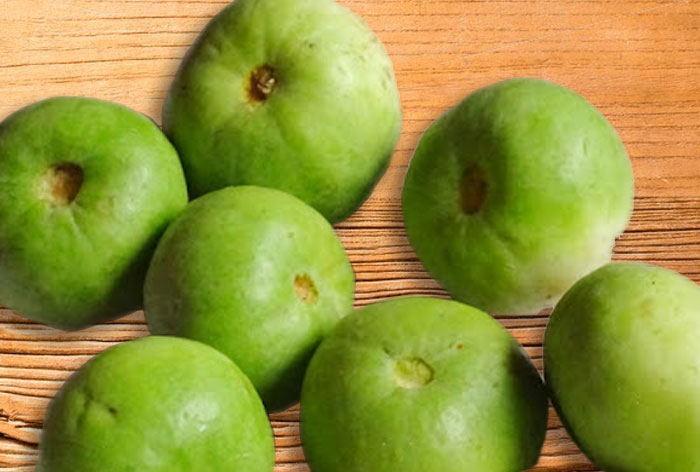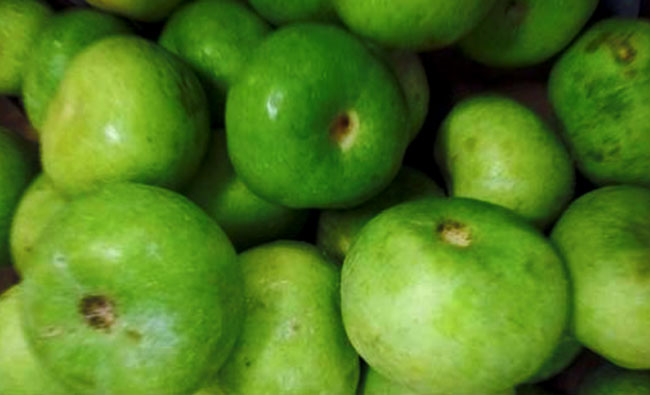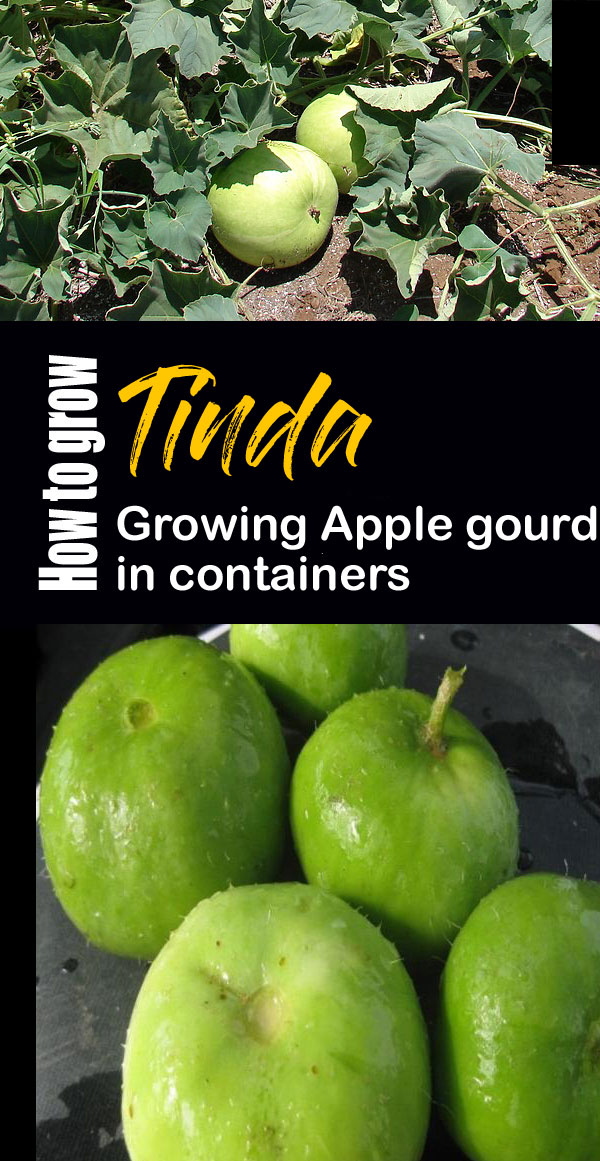Tinda (Apple gourd)
Learn How to grow Tinda, Growing Tinda in containers, Apple gourd care, the Main variety of Apple Gourd, Popular names and more about this plant. The round gourd is also called Tinda, apple gourd or Indian squash, its fruit is almost a gourd family with a diameter of approximately 5 to 8 cm, its shape is spherical, which is almost green. It is mainly the native of India. It is cultivated widely in India, Punjab and Uttar Pradesh. Apple gourd is rich in vitamin A. Tinda is popularly known as Tinday, Indian Round Gord, Apple Gourd or Indian Baby Pumpkin.
Classification
Scientific name Benincasa fistulosa
Common name Tinda, Round Gourd, Apple gourd
Plant type Vegetable
Sun requires Full Sun
Soil Sandy Loam Soil
Soil pH 6.5-7.5
Zone 3-10
Popular names in Indian languages
Tinda (Punjabi, Hindi), Tindsey (Rajasthan), Dhamase (Marathi), Meha (Sindhi) Round Gord (English)
How to grow Tinda (Apple gourd)
Soil and Location
Tinda grows very well in fully fertile or sandy soils; its roots are well developed in this soil. Its plant is well-suited for the development and good harvest of organic matter, sandy loamy and well-drained soil. The best pH range for Tinda is 6.5 to 7.5, which is very good at this.
For this, choose a place where the full sun comes and the minimum temperature of the day is approximately 60 degrees F.
Temperature
In tropical or sub-tropical climate, it grows very well in long, hot weather. If you want to plant, then its seeds can be planted in January or February. In the cold climatic zone, you can start it inside the house, and you can put it out after the cold outbreak is over. The ideal temperature for soil for germination of its seed should be 25 – 32 degrees Celsius.
Spacing
Its bed width is 1.5 meters and its seeds are sown at both sides of the bed. The distance between seeds should be approximately 18inchs. Soak the seeds in water for about 12 hours before planting, it is necessary for proper germination. Place two seeds in a hole. If you plant seeds in line, keep the distance between them from 48 inches to 70 inches. Read more.
Planting
Soak it in the water overnight before planting its seed, it will germinate soon. After making small mounds, give the seeds of Tinda 4 to 6 feet, keep the height of each mound about three feet and the diameter one feet. This will not accumulate water around the plant, better drainage is necessary for these plants.
Propagation
It is usually planted by seed, the suitable time is January and February.
Fertilizing
Vegetables are required to grow well and proper nutrition for a healthy yield. For Tinda, you can use organic and chemical fertilizers, however, you should use organic manure, because you call it a vegetable. Organic fertilizers are made from natural materials and bring necessary improvements to your soil.
After about 30 days, apply a general-purpose fertilizer when the plant develops slightly. Follow the instructions on fertilizer for the quantity of application. You can also use water-soluble or granulated fertilizer. Read more.
Growing Tinda in Containers
- Tinda is easy to plant in the kitchen garden, you can plant it in a pot when there is a lack of space. For this, you should use the Seeding Tray or the flat container which is about 12 “in width.
- You fill the flat container with rich and well-drained soil. You can also use your ground soil, but the garden soil is a bit heavy, so mix sand, coco peat and manure in it, I use cow dung compost to develop my plant, it is completely organic and it is best to get results.
- Now you open the packet of seeds and read the instructions written properly. Make a hole in the container with a gap of about 3 centimeters in the container, place a seed in each hole and cover the seed from the thin soil.
- Let the container soil wet well. Humidity is necessary for the plant. Place the container in the warm light area.
- Keep watching the container continuously, because the soil dries very fast in the container.
- After about 11 days the Tinda sprouts and small plants begin to appear.
- And after the harsh cold in February has passed, when plants mature enough, you can transplant it in the ground.
Apple Gourd Care
- Irrigate about 15-20 days after planting the crop. Irrigate the crop of 6-7 days. If the weather is much drier, or increase the irrigation if there is no rain.
- Weed after irrigation, remove the weeds immediately, it affects the yield of the fruit.
- This plant is the vine and requires support. Use wood or trail for support. By which the plant can grow well in the open air.
- Do not drag while cutting fruit, it can cause damage to the vine. You can use a sharp knife to harvest.
Insect and disease Apple Gourd
Apple Gourd has affected fruit flies, beetles, and whiteflies often. If any type of infection appears, immediately control it. You can use pesticide spray or oil to control. If the leaves of the plant become infected with fungal diseases, then use a general-purpose fungicide, get rid of it.
Harvesting Round gourd
Tina’s fruit grows on a vine, which is about 5 feet in length. About 70 days after planting, its gourds appear.
The main variety of Apple Gourd
The main three variety of Tinda (Apple gourd)
- Arka Tinda This is a high-yielding crop that is ready for 45-50 sowing.
- Bikaner Green Its fruit size is large and it is ready after about 60 days of sowing.
- Ludhiana S-48 This is also a higher yield crop, its fruit size medium, and green.
Uses of Round gourd
- Indians use Tinda (round gourd) to make vegetables. People use it in cooking in many places in Pakistan and Ghana. Ivy guards have to keep a proper distance for sowing.
Read also:
How to grow Kohlrabi at home. Growing Winter Vegetable. How to grow Custard apple in containers. Growing Pereskia bleo in containers. 8 Perennials vegetables you can plant once and savor forever. Growing Sweet corn in containers. Ivy gourd Growing and caring tips. Organic Bottle gourd growing and caring. Garlic Vine Growing and caring. Cinnamon growing in containers.
Happy Gardening.
For Pin:







